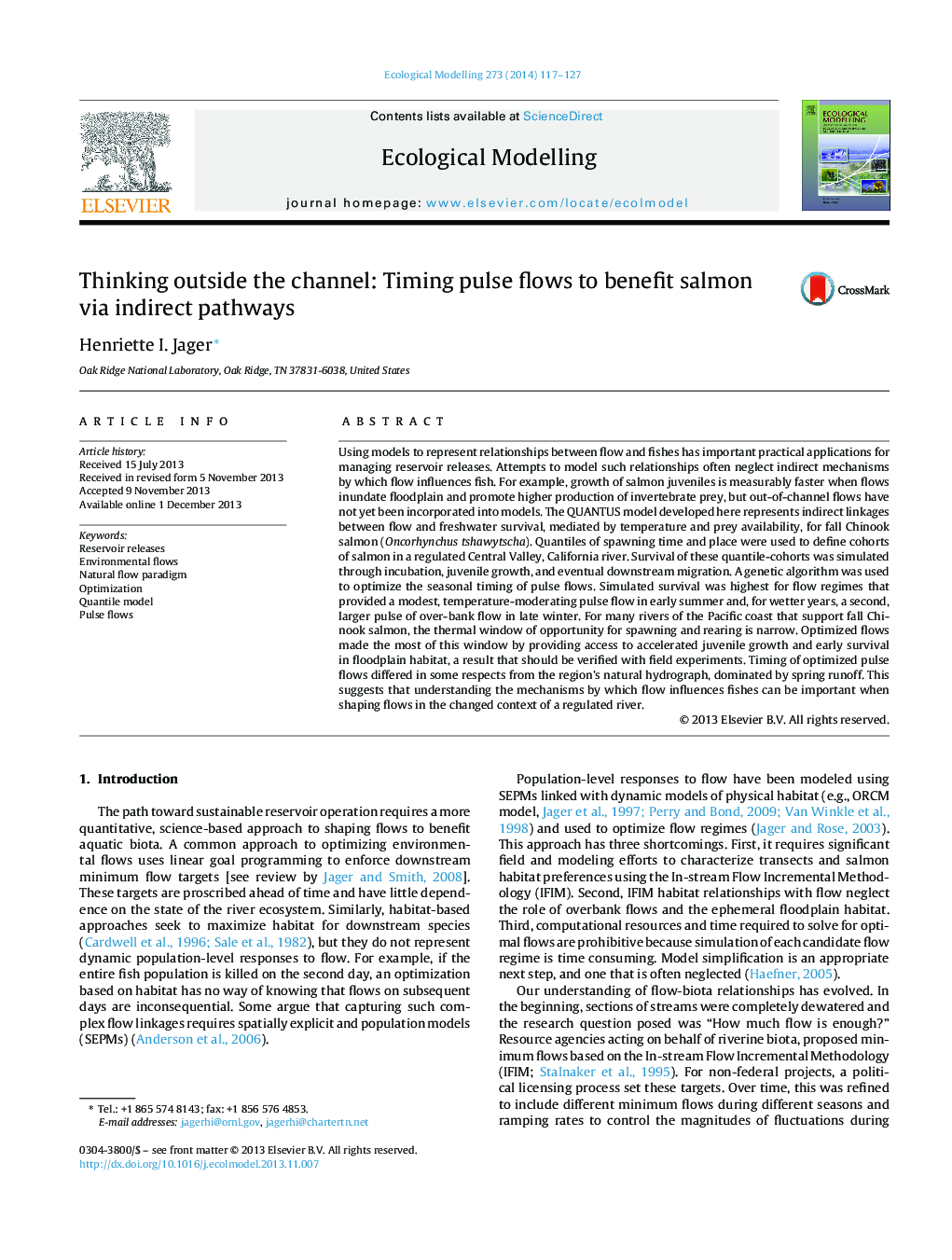| Article ID | Journal | Published Year | Pages | File Type |
|---|---|---|---|---|
| 6296922 | Ecological Modelling | 2014 | 11 Pages |
Abstract
Using models to represent relationships between flow and fishes has important practical applications for managing reservoir releases. Attempts to model such relationships often neglect indirect mechanisms by which flow influences fish. For example, growth of salmon juveniles is measurably faster when flows inundate floodplain and promote higher production of invertebrate prey, but out-of-channel flows have not yet been incorporated into models. The QUANTUS model developed here represents indirect linkages between flow and freshwater survival, mediated by temperature and prey availability, for fall Chinook salmon (Oncorhynchus tshawytscha). Quantiles of spawning time and place were used to define cohorts of salmon in a regulated Central Valley, California river. Survival of these quantile-cohorts was simulated through incubation, juvenile growth, and eventual downstream migration. A genetic algorithm was used to optimize the seasonal timing of pulse flows. Simulated survival was highest for flow regimes that provided a modest, temperature-moderating pulse flow in early summer and, for wetter years, a second, larger pulse of over-bank flow in late winter. For many rivers of the Pacific coast that support fall Chinook salmon, the thermal window of opportunity for spawning and rearing is narrow. Optimized flows made the most of this window by providing access to accelerated juvenile growth and early survival in floodplain habitat, a result that should be verified with field experiments. Timing of optimized pulse flows differed in some respects from the region's natural hydrograph, dominated by spring runoff. This suggests that understanding the mechanisms by which flow influences fishes can be important when shaping flows in the changed context of a regulated river.
Keywords
Related Topics
Life Sciences
Agricultural and Biological Sciences
Ecology, Evolution, Behavior and Systematics
Authors
Henriette I. Jager,
